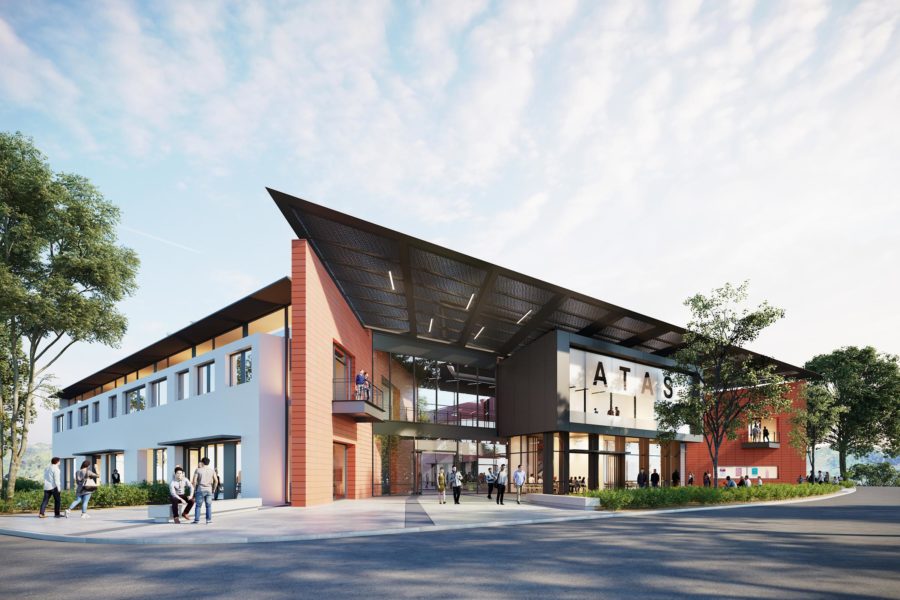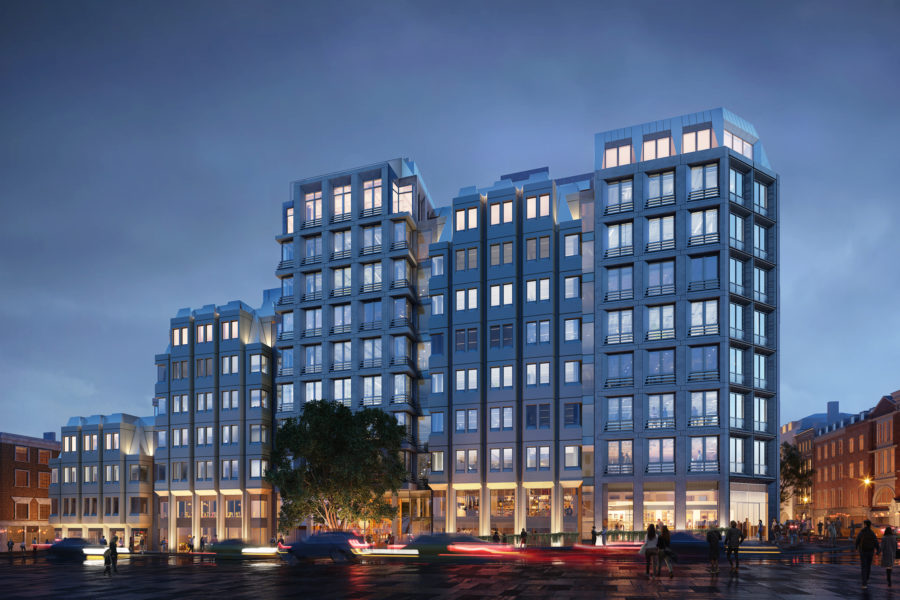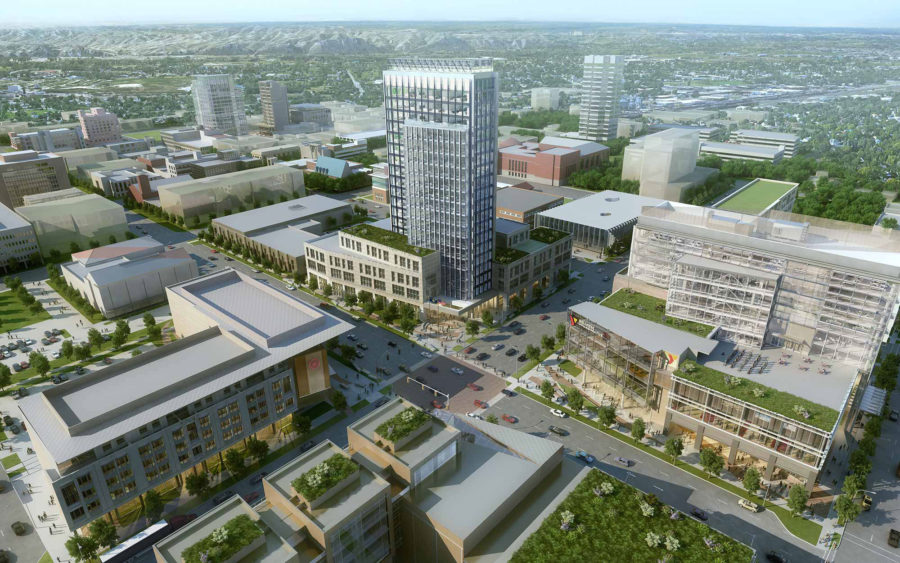Courtesy : gbdmagazine.com
Climate change design
“Our nation’s buildings are responsible for about 40% of all US carbon emissions, with many low-income communities of color suffering from the impacts of substandard housing and the pollution from the power plants generating extra electricity to heat and cool them,” write Lauren Urbanek and Khalil Shahyd in a 2021 NRDC article.
The NRDC reports that affordable housing, efficient electric heating, and additional innovative technology are among the solutions to reach net zero emissions by 2050. “Addressing the efficiency, resilience, and quality of our homes and buildings is crucial both to meeting the nation’s climate goals and to ensuring equitable living conditions,” Urbanek and Shahyd write.
Design for climate change is top of mind for most architects and designers today, from Gensler to Cushing Terrell. We’ve talked to architects around the globe about how the industry can and should design for climate change.
Educate Clients

The Advanced Technology and Applied Science building at Saddleback College is designed to achieve Zero Net Energy with a GGBC Gold rating using passive strategies integrated into the design of the building to minimize energy consumption. Site orientation, geometric relationships between adjacent masses, and an aggressive self-shading strategy all lower loads on the building. Rendering courtesy of HED
“Our first responsibility is to educate, and then it’s to design for clients the best possible building or project that meets their needs,” says Daniel Jaconetti, senior project architect and the National Sustainable Design Leader for the architecture firm HED.
Jaconetti says the best buildings are designed to be resilient, energy-efficient, comfortable, and without toxic chemicals. “The energy piece is probably the one that makes the most sense to people—being as efficient as possible. You’re putting out less emissions and you’re taxing the system less,” he says.
But it’s not just about environmental resiliency. “Walk down a city street with a bunch of vacant storefronts. That doesn’t do well for the city, but if the project is designed so that it can change and evolve, when somebody leaves someone else can come in. Those are all things we need to share with and prepare our clients for at the beginning of the project.”
Reuse, Reuse, Reuse

Gensler repositioned this landmark Brutalist building in London to preserve more than 80% of its original structure and minimize the amount of energy and emissions used in the project. Rendering courtesy of Gensler
Gensler is a big advocate for reusing what you already have. Gensler Global Design Resilience Leader Kirsten Ritchie previously wrote for gb&d: “Generally speaking the longer materials are used, the better it is from a carbon emission perspective. While there are some exceptions, like replacing woefully inefficient single-pane windows with dual-pane insulated units—we are all best served when we can extend the life of the materials used in our buildings.”
Renovating can mean keeping an existing structure and reskinning it to improve daylight and energy efficiency, for example, delivering new Class A office space to the market with an embodied carbon footprint of 50 to 60% less than building new. Ritchie says that can also improve the building’s resiliency to more extreme climate events like longer heat waves, colder winters, and more intense winds.
“When a building’s original use may no longer be its highest and best use, look to adaptive reuse,” she previously wrote for gb&d. “Whether converting a tired office building into a thriving new residential development or transitioning a lifeless shopping mall into a vibrant urban office campus, the embodied carbon footprint can be expected to be 30 to 50% lower than building new.”
Use Sustainable Building Materials
Consider climate change from the beginning of your design. Photo courtesy of EHDD
What are the impacts of the materials you spec? Look for Red List–free materials, and take the time to truly understand whether you’re using sustainable building materials.
“In any new building project today there are hundreds if not thousands of products used in the base construction as well as FF&E (furnishings, fixtures, and equipment). It is critical to not get overwhelmed by the sheer magnitude of information,” Ritchie and the team at Gensler advise. “We recommend using the 80/20 rule as your guide in figuring out what to focus on—20% of the products, whether because of their large individual footprint (such as concrete, steel, aluminum, or glass) or because of the quantity of material specified (wallboard, flooring, furniture) are driving 80% of the carbon footprint of your project or your company’s building portfolio. Direct your energy not to the one or two unique conference room tables but to the thousands of task chairs, the 25 stories of glass, and the 100,000 square feet of wallboard that collectively translate to large embodied carbon footprints that should be addressed.”
You can also reduce concrete and steel impacts, according to Brad Jacobson of EHDD. “When specifying concrete, ask your structural engineer or concrete supplier for a low-cement concrete mix. For steel, inquire about recycled content and seek out rebar manufactured in low-emission zones such as the Pacific Northwest, where hydropower is abundant. Additionally, design mass timber structures that avoid emissions of concrete and steel while sequestering carbon in the wood structure. Make sure you are specifying wood from sustainably managed forests, such as those with the FSC-certified designation, to achieve the full sequestration benefit.”
Make Communities More Walkable

Conceptual urban development in Billings, MT. Rendering courtesy of Cushing Terrell
Making neighborhoods more walkable allows for more green space and provides health benefits to people and the environment. “Adding more trees that provide shade mitigates the urban heat island effect, wherein dense concentrations of pavement, buildings, and other surfaces absorb and retain heat,” says Keith Walzak, director of landscape architecture and urban planning at Cushing Terrell. “Reducing the amount of paved surfaces also discourages the use of vehicles and can help make areas less prone to flooding.”
Walzak and the Cushing Terrell design team point to concepts like the 15-minute neighborhood, where residents can easily access food, education, and outdoor space within a 15-minute walk from home, as a successful design.
Design for flexibility—allowing for shorter leases with flexible building types, for example—is one way to make greener, more accessible neighborhoods a reality, according to Renee Schoonbeek, senior associate vice president at CallisonRTKL. “Our cities must adapt to change—climate change, behavioral change, and change in community needs—and make room for flexibility in urban planning, urban design, programming, and management of urban space,” she says.
Creating 15-minute neighborhoods reduces traffic and travel times and improves the environment by minimizing the need for a car,” Schoonbeek previously wrote for gb&d. An added bonus: People are naturally encouraged to support small businesses and eat locally sourced produce.
Use What You Have
Landscape architects have long pushed for the incorporation of climate positive design strategies in project development, according to Scott Lamont, CEO of landscape architecture firm EDSA. Lamont says EDSA has always embraced an innate approach to its projects—including designing with natural drainage corridors, utilizing solar and thermal energy, and developing creative solutions for stormwater management to protect cities and properties near the coastline.
Additionally, he says water management is a major part of every urban renewal and revitalization effort. “Among prime considerations for EDSA’s urban planners is the management of stormwater in cities, with designs conceived to incorporate elements such as bio-retention, vegetated swales, and rain-garden systems to ease drainage, erosion, and the potentially dangerous risks of flooding from run-off and rising seas,” Lamont wrote for gb&d.



